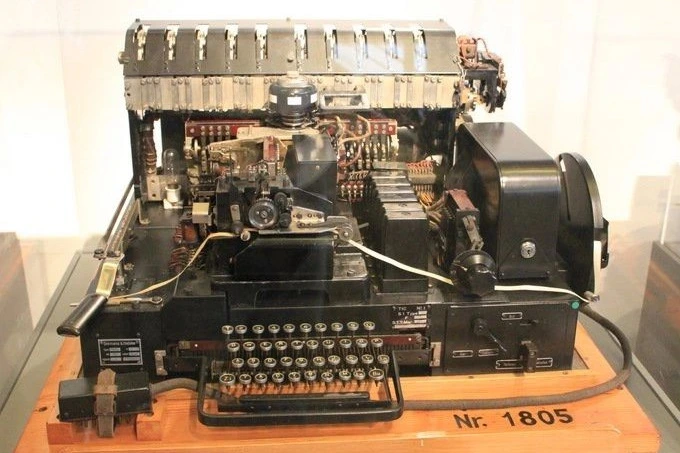How Arne Beurling cracked the secret Enigma machine codes

People have employed numerous encryption techniques for their secret communications since prehistoric times. However, a Swedish mathematician, Arne Beurling, cracked all the secret German Enigma machine codes using only a pencil and a piece of paper.
This technique is especially vital during the battle. During World War II, the most famous event in the history of cracking such a code happened. The Allies worked for two years to crack the German Enigma machine’s encryption. Few people realize that in 1940, a Swedish mathematician, Arne Beurling, used a pencil and a sheet of paper to decipher the code of a considerably more complicated gadget in only two weeks.
During WWII, the Germans utilized a machine called Enigma to encrypt their communications. These codes took the Allies two years to break. Throughout this period, a team of Polish technologists led by mathematician Alan Turing worked nonstop.
Arne Beurling, a Swedish mathematician, produced something comparable in only a few weeks in 1940. He also cracked the codes of a gadget even more complicated than Enigma. Furthermore, the scientist accomplished this feat using just a pencil and a piece of plain paper.
German Enigma machine is a beast
A Siemens & Halske T52 was the other machine. SFM (abbreviation for Schlusselfernschreibmaschine, Key Teletype) or Geheimschreiber are two more names for it (Secret Teletype). The device’s most renowned name was Sturgeon, which was given to it by the allies. The Germans utilized it as well.

The Enigma was designed for mobile forces, and the SZ 42 Lorenz was a hefty Wehrmacht device, for example. The T52 was used by the highest levels of the Luftwaffe and Kriegsmarine (for the latter, it was originally developed).
Bletchley, named after its headquarters at Bletchley Park, was a team of British cryptanalysts who knew the code names of every German encryption equipment. One of the German wireless systems was dubbed Sägefisch (Sawfish), SZ Lorenz was Tunny (Tuna), and Siemens’ T52 was called Sturgeon in different versions (Sturgeon).
The key distinction between T52 and Enigma was that the operator just had to type in the required text. Everything happened on its own. The machine was capable of both encryption and decryption. Because the result was sent in Morse code, Enigma needed to read it. On the one hand, it was really handy and quick. On the other side, there was a risk that the operator might continually utilize the same key, allowing the adversary to decode the communication.
This machine’s operating system was likewise much more complicated than Enigma and Lorenz’s. It was created using GPAN (Pseudorandom number generator). This technique generated a series of integers that seemed to be fully random at first look. A modest number of starting values were used to establish the order. All of this was paired with the device’s usage of 10 drums rather than the typical five seen in other devices. Furthermore, these reels were not organized in a linear fashion, resulting in a quintillion possible possibilities.
The T52a first surfaced in the early 1930s, far before World War II. The sole difference between subsequent generations was that they could reduce electrical interference. Heinrich Dering demonstrated a few years later that if you transmit two encrypted messages with the same key, they may be easily hacked. He was completely correct: the Bletchleys were able to decode all of the T52b codes in this manner.

The Luftwaffe
As a result, the Luftwaffe demanded that the government expedite the introduction of a more modern machine into service. As a result, the T52c emerged, shortly being superseded by the T52d. According to Dering’s study, this is likewise not the best solution. As a consequence, the most sophisticated and secure T52e debuted in 1944. The trouble was that the war was practically over at the time. The most crucial thing was that a Swedish mathematician was able to crack all of these machines’ codes at the same time.
Arne Beurling
The famous scientist’s journey started in 1905, when he was born in the Swedish city of Gothenburg. The family was aristocratic and well-born. Arne Carl-August Beurling had all he needed. He was born with a brilliant intellect and a strong work ethic. He had a fantastic education.

A clever person is brilliant in everything, as the saying goes. One was Beurling. His first bachelor’s degree was in the discipline of… the arts! The second level of education was philosophical. A gifted young guy eventually earned a doctorate in mathematical sciences. The scientist’s career was on the rise when the Second World War broke out, and even an incident like this couldn’t stop it.
Beurling was very fortunate that Sweden decided and maintained neutrality during this long and brutal conflict. Of course, at various points, the government had to make concessions to each side. The Swedes included individuals of many religious faiths. Some people worked behind the scenes to subvert the Nazi dictatorship. Arne Beurling was one of these individuals.
The Nazis initiated Operation Weserübung in the early spring of 1940. It consisted of their troops invading the Danish and Norwegian territories. They were, nevertheless, neutral nations. For a good cause, the Swedes started to worry that their nation might be next on this list. They all went underground. The Germans defended their activities by claiming they had to defend themselves against similar acts by England and France. They shut down Narvik’s port because mining shipments (mostly Swedish iron) were being sent directly to Germany and supplying Hitler’s troops.
Messages started to be conveyed via Sweden as soon as the Nazis took control of these nations. Important military transmissions were encrypted using the same T52. It was, as previously said, an extremely complicated and dependable machine. It was formerly thought that cracking it was almost difficult. Nobody expected an unknown mathematics professor, armed just with a pencil and a piece of paper, to “unlock” all the codes so quickly.
Arne Beurling acquired a cryptographer speciality while serving in the army. He worked with intercepted communications, as did many other mathematicians. He completed it in less than two weeks. Ericsson was able to duplicate the encryption machine as a result of this. For a long time, messages have been sent between Berlin, Oslo, and Stockholm. The Swedes were the first to hear of Operation Barbarossa’s impending launch (invasion of the Soviet Union). The Soviet administration was alerted. Because Sweden declined to share the code, they did not consider this information. As a result, she was deemed untrustworthy.
Approximately 500 thousand emails were intercepted in all. The majority of them have been decoded. The Nazi administration was baffled as to how such knowledge could have gotten out. They started to enhance the T52 after they learned this. Except for the T52 d, all following versions were unable to defend themselves against Beurling. The communications could no longer be decoded. However, this automobile did not exist until the end of 1943. Two additional major incidents had transpired at that time, fully determining the war’s end.
Enigma was completed by Poles
In 1939, the non-military “Enigma” was given to Poles from the Biuro Szyfrów (cryptographic agency). They went up and down it. The automobile was eventually delivered to Bletchley Park. A group of mathematicians led by Alan Turing unveiled all of the equipment’s secrets there. True, the seizure of a German submarine in 1941, which included an Enigma and a codebook, aided this. An English chemist and mathematician called William Thomas Tutt cracked the keys to the Lorenz automobile in the summer of 1941.
The “Sturgeon” ciphers then “finished off” Bletchley. The Germans made a mistake in this regard. The Luftwaffe sent communications using simple keys that were repeatedly repeated. Furthermore, they sometimes sinned by utilizing a less secure “Enigma.” The British were unaware of Burling’s achievements in this sector, most likely because they were kept secret by neutral Sweden.
After the war, Arne Beurling became a professor at Harvard and Princeton. The scientist collaborated with Albert Einstein at the IAS Institute for Advanced Studies. Many scientific minds were mentored by the Swedish professor. Lennart Carleson and Carl-Gustav Esseen are two among them. Beurling made a seminal contribution to mathematics; the theorem on the factorization of internal and exterior functions, for example, is named after him.
In 1986, the renowned mathematician passed away in the United States. “Perhaps the greatest triumph of cryptanalysis done during World War II was Arne Beurling’s solution of the Geheimschreiber secret,” said David Kahn, author of the classic book “Codebreakers,” about him two decades earlier. The highest compliment and a fitting epitaph. Arne Beurling carried the knowledge of how he cracked the codes of the most complicated encryption machine with him to the grave.




